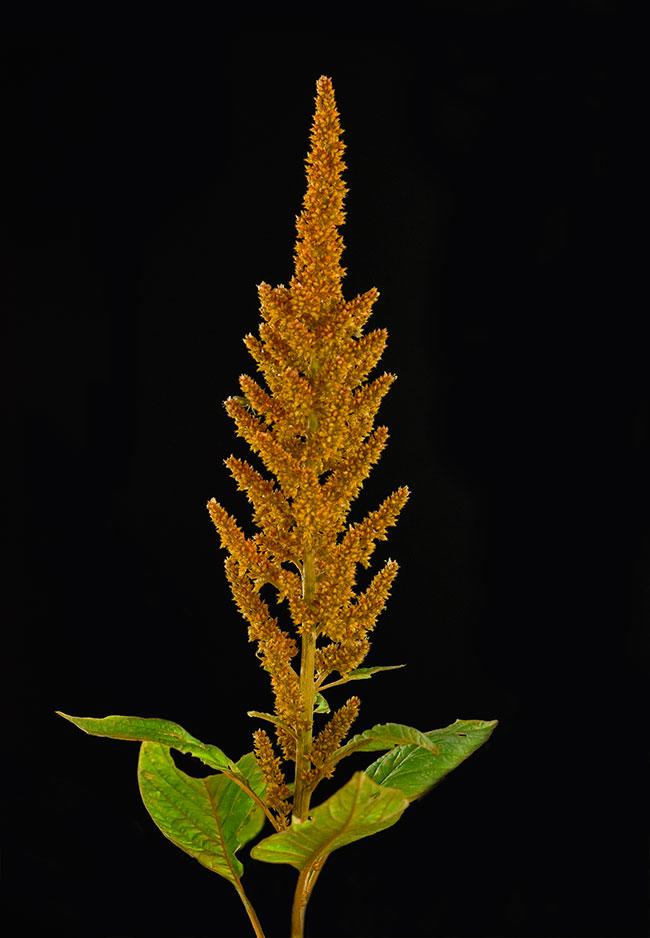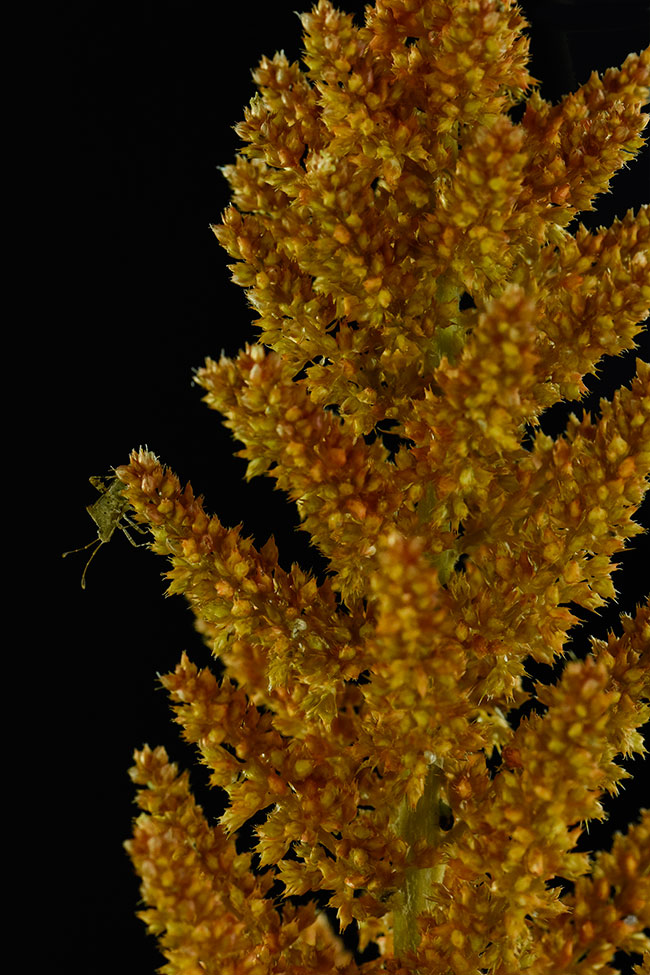Amaranth is one of the most forgotten and ignored foods of the Maya
The Mayan student interns who assist us in research on foods eaten by the Maya today in remote areas drink amaranth and eat amaranth. These are Highland Q’eqchi’ from the mountainous area between Senahu and Cahabon, Alta Verapaz.
Yet other Maya do not even know that amaranth seeds are edible: most Amaranthus plants are raised as a garden decoration. In the cemetery of Rabinal, Baja Verapaz, there was Amaranth blooming in November (Day of the Dead week).
Many people who are not familiar with grain amaranth may eat bledo, the leaves of young immature amaranth plants. Several species of Amaranthus are raised for leaves; other species are preferred for their grain-like seeds; but many local people think Amaranth plants are just a common weed.
Amaranthus, collectively known as amaranth, is a cosmopolitan genus of annual or short-lived perennial plants also. We have several types of Amatanthus under observation in our own garden.
When I Google “Superfoods”
In a list of “52 of the Healthiest Superfoods”, amaranth is not included
www.womansday.com/food-recipes/food-drinks/tips/g2211/best-superfoods/?
In a list of 25 superfoods, lentils, quinoa, almonds, spinach, but no amaranth.
http://greatist.com/health/25-greatist-superfoods-and-why-theyre-super
In a list of 50 Superfoods, tomatoes, broccoli, walnuts, even spirulina (algae) are listed, but no amaranth.
http://guidedoc.com/best-superfoods-list
Our goal is simple: we intend to work at letting the world know about amaranth until this remarkable food becomes as well known and respected as quinoa of the Incas of Peru.
Amaranth is grown from USA down through Mexico and Guatemala
Amaranthus cruentus, bledo rojo, amaranto rojo
Both seeds and leaves (and fresh young shoots).
Amaranthus dubius, Chic-ixtez, Acilixtez
Both seeds and leaves.
Amaranthus hybridus, bledo, ses (Q’eqchi’)
Wild plant, a roadside weed.
Amaranthus polygonoides
Leaves and shoots, wild
Amaranthus scariosus
Zacapa, Santa Rosa
Amaranthus spinosus, bledo
Petén, Alta Verapaz, Izabal, Zacapa, Jalapa, Jutiapa, Santa Rosa, Escuintla, Sacatepéquez, Retalhuleu, Quetzaltenango, San Marcos (Standley and Steyermark, 1946; USDA, et al, 2012).
Amaranthus viridis, amaranto verde, bledo
Several more species to come in future reports.
The bibliography for these references will be on our web site shortly. In the meantime, the best monograph on Amaranthus species is by Dr Cezar Azurdia. However since this is not published and not on-line, we do not yet have a copy.
To encourage Mayan families to enjoy health benefits of Amaranto and bledo
Once we learned how healthy amaranth and bledo were, and once we noticed how few Maya people cultivated this plant, we realized how helpful it could be for us at FLAAR Mesoamerica to help local people learn about the health benefits of Amaranthus species.
Plus, it is one of the easiest plants to grow: it grows very very fast, and each plant produces thousands of tiny seeds.
Plus, a series of fun, colorful, educational books on amaranth and bledo
If you help children to learn, they in turn can educate their parents. And equally, if you assist parents to learn, they can help teach their children. So we wish to help both parents (and grandparents) and children, to learn about both bledo and amaranth.
Essential will be information on Vitamins, Minerals & Food Values for Improving Health
Yes, lots of people have already written on vitamins and minerals for children. But none are focused on the foods of the Mayan, Xinca, and Garifuna people. None of the books on amaranth are in Mayan or the other languages of Mesoamerica.
We will also feature Amaranth in our“Learning ABC, A to Z for Children”
A = Amaranto
B = Bledo
C = Calcium
Z = Zinc
Supermarkets in Guatemala which are in many cities throughout the country
Paiz (we finally found amaranth seeds, but literally“hidden from view.” Walmart Supermercado La Torre (they sell amaranth) Maxi Despensa Despensa Familiar
Membership Club stores
PriceSmart We will be happy when every store in Guatemala offers amaranth (in addition to quinoa, which is much better known). First Posted June 2017 after we again found local Mayan people who have amaranth in their gardens as decoration but do not realize the seeds are edible (and super-healthy).
First Posted June 2017
after we again found local Mayan people who have amaranth in their gardens as decoration but do not realize the seeds are edible (and super-healthy).















































































